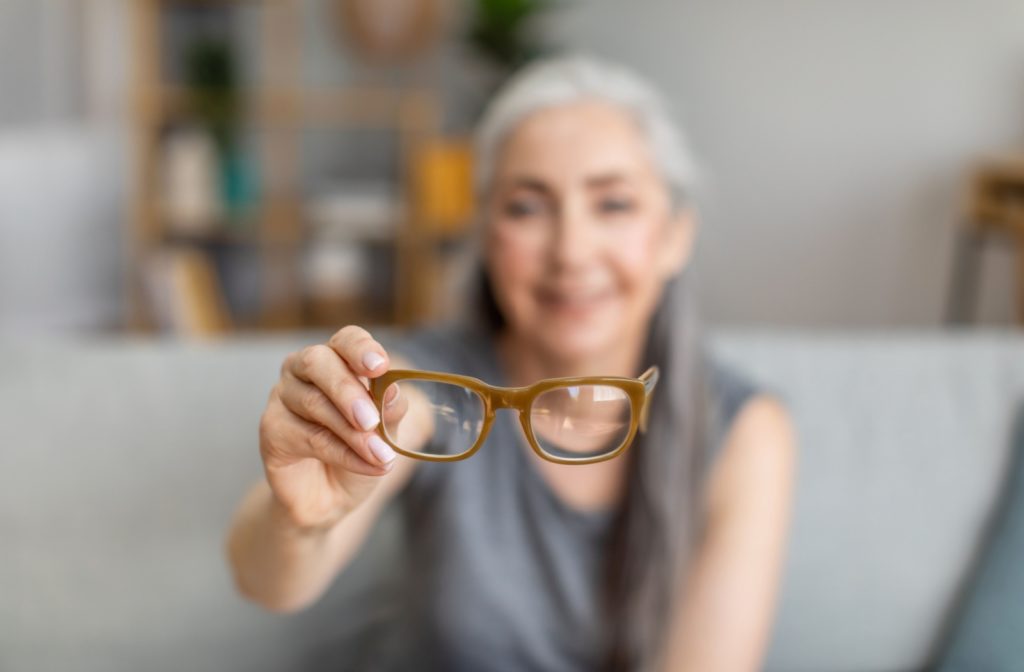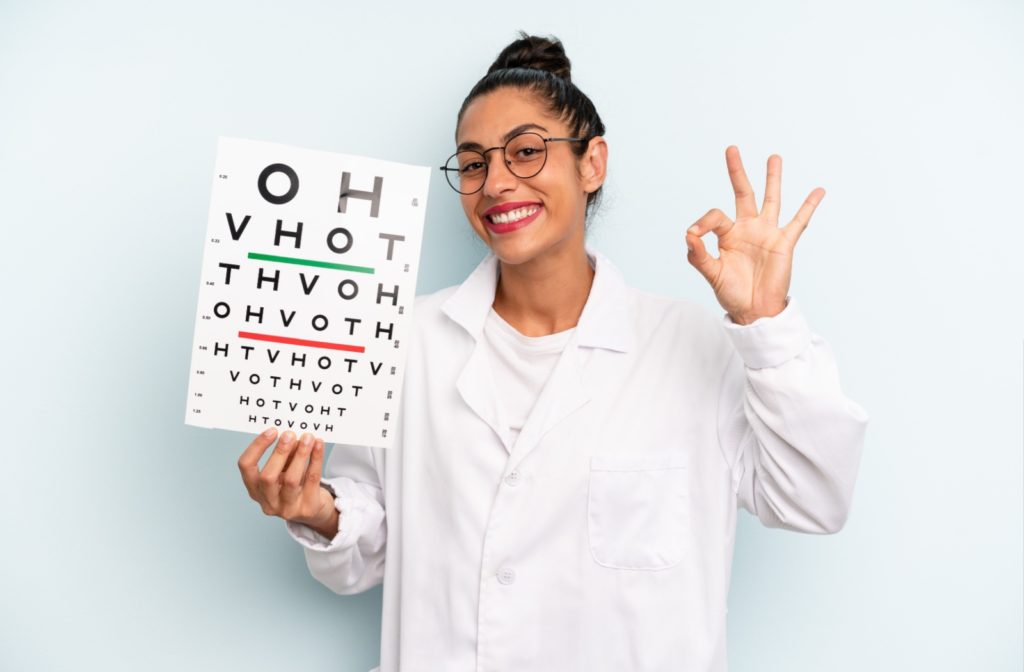Vision is one of our most essential senses, shaping how we perceive and interact with the world. Whether it’s the vibrant colors of a sunset, the delicate details in a painting, or the comforting sight of a loved one’s face, our vision plays a crucial role in our daily lives. But what exactly is considered perfect vision?
Many consider “perfect” vision to be 20/20 vision, as determined by an eye exam, but there are other factors that can affect your vision not based on how well you can see. For people with vision issues, glasses or contacts are popular ways to get closer to perfect vision.
What Does Perfect Vision Mean?
Many of us have heard the term “20/20 vision,” but what does it actually mean? In simple terms, 20/20 vision is a measurement of visual acuity, which refers to the clarity and sharpness of your eyesight. If you have 20/20 vision, it means you can see clearly at 20 feet what a person with normal vision should see at that distance.
You may already see an issue there. 20/20 is not, in fact, perfect vision, but average vision. That means you can have “better than perfect vision” if you have 20/15 vision, for example. This is where you can see a line on the eye chart at 20 feet that the average person can only see when they’re 15 feet away.
In fact, about 35% of adults have natural 20/20 vision. But even if we still consider 20/20 the benchmark for perfect vision, it’s important to note that it’s just one aspect of overall eye health.
How Vision Is Measured
One of the most recognizable ways to measure vision is using a Snellen chart, which displays letters of varying sizes on a wall 20 feet away. During an eye exam, you’ll be asked to read the smallest line of letters you can see clearly. These days, your optometrist may use a screen or similar method, but the goal is the same—to determine your visual acuity and whether you need corrective lenses.
However, visual acuity is just one part of the equation. Comprehensive eye exams also evaluate other factors such as peripheral vision, depth perception, and eye coordination.
Misconceptions About Perfect Vision
Many people believe that having 20/20 means never needing glasses or contact lenses. However, this isn’t always the case.
Perfect vision encompasses more than just seeing clearly at a distance. It involves a range of visual skills, including eye health, eye coordination, color vision, and depth perception. Even individuals with 20/20 vision may require corrective lenses for reading due to presbyopia, a natural hardening of the eye’s lens.
This is why it’s useful to distinguish between “sight” and “vision.” Sight refers to the ability to see clearly, while vision encompasses a broader range of visual abilities.
Vision includes how your eyes work together, how they process information, and how they communicate with your brain. Therefore, perfect vision isn’t just about sharp eyesight, it’s about having a well-functioning visual system that supports various activities and tasks.

Factors Affecting Vision
As we age, our vision inevitably changes. Common age-related vision problems include:
- Presbyopia: A condition where the eye’s lens gradually loses its ability to focus on close objects, causing difficulty in reading and other near-vision tasks.
- Cataracts: A condition characterized by the clouding of the eye’s natural lens.
- Age-related macular degeneration (AMD): AMD actively deteriorates the central part of your retina, impairing your ability to see fine details clearly.
- Glaucoma: This condition progressively damages the optic nerve, often due to increased eye pressure, leading to vision loss.
Your lifestyle and overall health can significantly impact your vision. For example, a diet rich in antioxidants, vitamins, and minerals can help protect your eyes from damage. Regular exercise can improve blood circulation to the eyes, reducing the risk of conditions like glaucoma. On the other hand, smoking can increase the risk of cataracts and macular degeneration.
Regular eye exams are crucial for detecting these issues early and managing them effectively to preserve your eyesight.
With this in mind, maintaining healthy eyesight requires a combination of good habits and preventative care. Here are some tips to keep your eyes in good condition:
- Eat a Balanced Diet: Incorporate foods rich in vitamins A, C, and E, as well as omega-3 fatty acids. Leafy greens, fish, nuts, and citrus fruits are excellent choices.
- Stay Hydrated: Drinking plenty of water helps keep your eyes moist and reduces the risk of dry eye syndrome.
- Protect Your Eyes: Wear sunglasses with UV protection to shield your eyes from harmful rays. Also, use protective eyewear during activities that could pose a risk to your eyes.
Achieving 20/20 Vision
When correcting vision, the goal is to help you get as close to 20/20 vision as you can, though 20/40 is considered acceptable for an unrestricted driver’s license in most states. If you have vision problems, several correction options are available. Glasses and contact lenses are the most common solutions, providing clear vision for various tasks.
For those seeking a more permanent solution, refractive surgery such as LASIK can correct vision by reshaping the cornea. Consult your optometrist to determine the best option for your needs.
Here’s to More than Perfect Vision
Perfect vision is about more than just having 20/20 eyesight. It’s about maintaining a healthy visual system that supports your daily activities and overall quality of life. Regular eye exams, a healthy lifestyle, and the right corrective measures can help you achieve the vision that will support your lifestyle.
If you’re experiencing vision problems, schedule an eye exam with Total Vision Richmond today and take the first step towards better eye health!


